“Birthplace of the Winds”
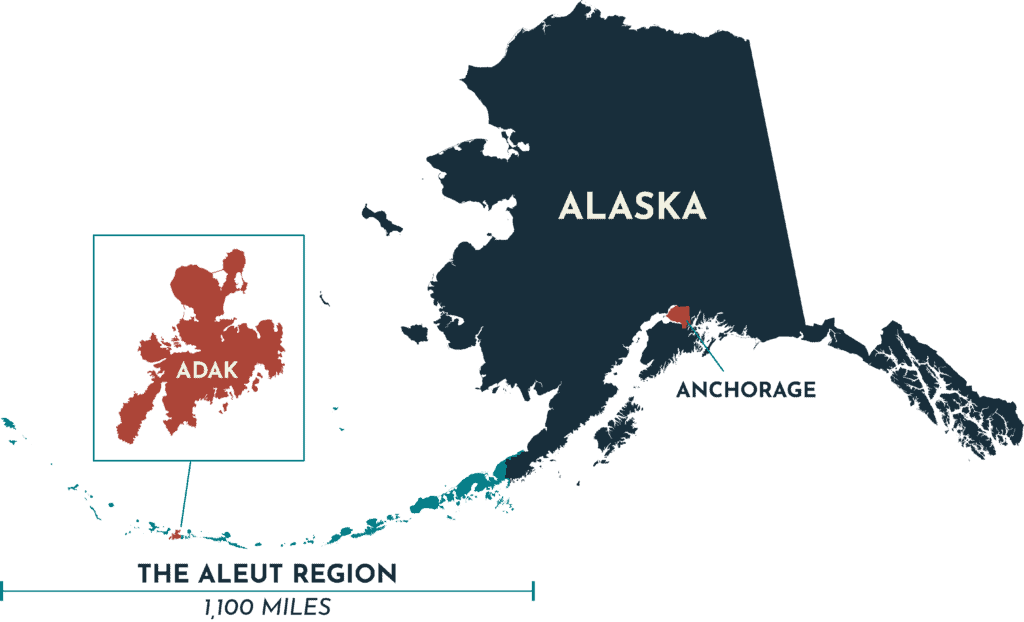
Near the western tip of the Aleutian Islands lies the tiny, remote community of Adak. Nestled against Kuluk Bay on windswept Adak Island in the middle of the Bering Sea, Adak is the westernmost city in the United States, and the southernmost city in Alaska (it’s a three-hour jet flight from Anchorage to the Adak airport).
Called “birthplace of the winds” due to a propensity for extreme and unpredictable weather, Adak’s location near the end of the Aleutian island chain means wild winds often sweep across the landscape, accompanied by rain, snow, and even sunshine.
With wide scenic natural areas, abundant wildlife, and many recreation opportunities, Adak is a destination for adventurous and independent travelers.
Who settled Adak?
Adak is the Traditional Homeland of the Unangax̂ People

Unangax Dancers
Adak Island is the traditional home to the Unangax̂ (Aleut) people who have lived for centuries within this rugged, wild environment. Human migration across the Bering Land Bridge during the last Ice Age more than 9,000 years ago led Unangax̂ descendants westward from the Alaska Peninsula, where they built skin boats, called iqyax, to paddle between the islands of Unangam Tanangin or what we now call the Aleutian Islands.
Making their homes in large subterranean dwellings called ulax̂, they lived communally, hunting the upland areas and shorelines, and fishing freshwater streams and open seas. Skilled at their crafts, Unangax̂ people harvested whales, sea otters, seals, sea lions, and shore birds, among other animals, and created sophisticated clothing to protect themselves from the area’s wet, cold, and windy climate.
Russians in Adak
Russian explorers first arrived in the Aleutian Islands sometime around 1740 after sailing 2,400 miles from their home ports across the ocean. To learn more about the period of Russian colonization in what we now know as Alaska, read our blog post “Adak’s Indigenous History.” Upon the purchase of Alaska by the United States from Russia in 1867, Adak Island became part of the Alaska Territory, and when the United States found itself on the receiving end of a Japanese attack on Dutch Harbor in 1942, the Aleutians were thrust into the national spotlight.
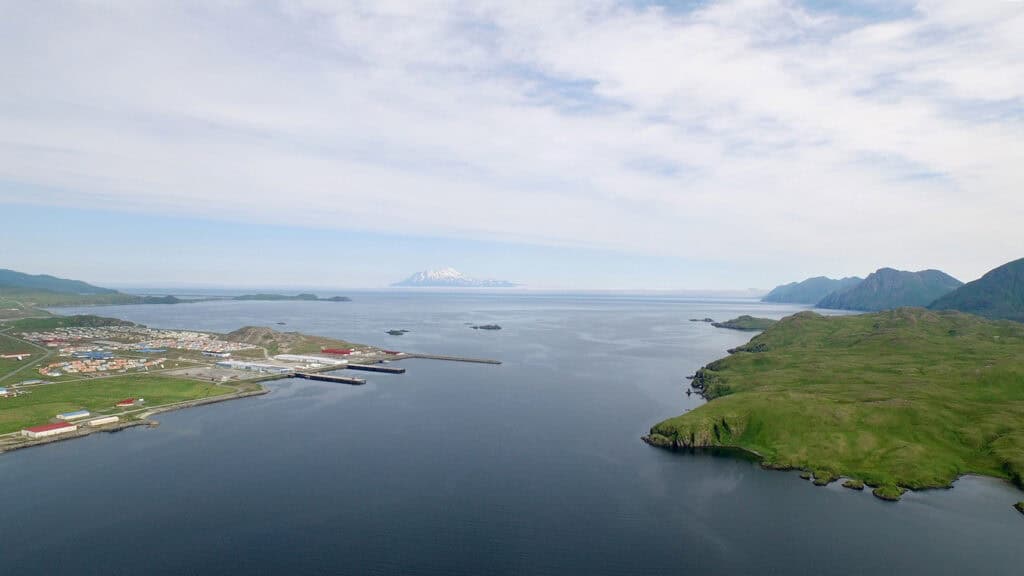
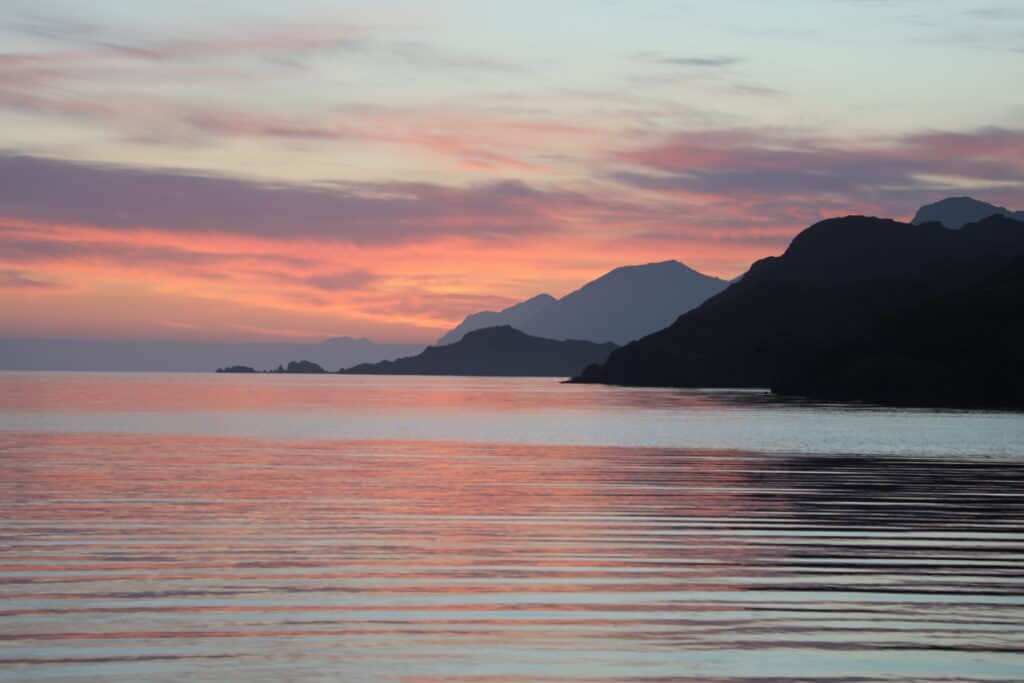
The US Military and War in Adak
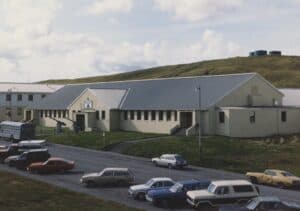
1998, Adak Military Building
The US Army Air Corps settled in to build a base and airfield on Adak Island in August of 1942, and up to 90,000 troops were stationed there during peak activity, namely when the Japanese overtook the smaller Aleutian islands of Attu and Kiska farther to the west. In early October 1942, Japanese planes appeared, dropping bombs on the island and strafing the new base with machine gun fire, thus including Adak Island in the club with Dutch Harbor and Pearl Harbor as the only United States location to be subject to enemy air raids.
When the war ended, Adak’s military management was transferred to the US Air Force, which operated there until 1950 when the US Navy took over, and gradually the number of service members, their families, and civilian employees declined but stayed significant to the United States during the Cold War era. Utilized as a listening post, weapons storage facility, and submarine surveillance center, Adak Base featured up to 6,000 military personnel deemed critical to this “new threat” from Russia.

Aleut representatives signing the Adak Land Transfer
Gradually, however, world powers notably reduced their nuclear arsenals and diplomatic bluster, and Adak’s military forces were reduced once again in the 1980s. By 1994, all military personnel and dependents had transferred from Adak. The former Naval Air facility was listed under the Base Realignment and Closure Program in July 1995, and the military mission at Adak officially ended on March 31, 1997. From an infrastructure point of view, Adak Island was left with an entire community of buildings, airfields, machine shops, and other structures once the military pulled up stakes. Still, despite this, the island’s natural beauty is a reminder that nature always prevails.
On March 17, 2004, The Aleut Corporation, the Alaska Native regional corporation for the Aleutian and Pribilof Islands of Alaska, received 47,150 acres (about twice the area of Manhattan) of land and many repurposed facilities on Adak Island as the result of a Land Transfer Agreement with the United States Government facilitated by the Department of the Interior under public Law Order 7609. Aleut has maintained a strong presence on the island, preserving the traditions and practices for living and thriving in this unique environment.
Who lives in Adak today?
Is Adak really abandoned?
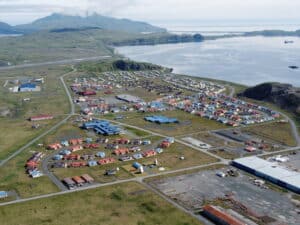
Adak, Alaska
Contrary to media reports that the island is abandoned, Adak’s current population sits at around 27 full-time residents, nearly all of whom live within the neat grid of former military housing within two designated neighborhoods: Sandy Cove and Kuluk. Adak’s current workforce consists of people who work in government, transportation, for Native corporations, or within the fishing industry.
Can you live in Adak?
The city of Adak lies in the northeastern section of the island and has a modest offering of businesses and services to meet the basic needs of residents and visitors. The Adak Island Inn, operated by Aleut Ventures, features a collection of 40 fully furnished townhomes offering short-term, long-term, and seasonal rentals. Located in the Sandy Cove neighborhood, the inn is a perfect “home away from home” for adventurous travelers looking for truly unique Alaska encounters.
With a diverse mix of history, regional culture, adventure, and stunning natural beauty, Adak Island has an activity for everyone. From learning about WWII historical sites to trekking the local trails, Adak’s rugged coastlines, rich wildlife habitats, and sweeping tundra provide endless opportunities for a multitude of adventures. Trek across mountains, beaches, and hillsides for stunning views, or dive into rich environments perfect for bird watching and photography. For those looking for a truly wild experience, hunting and camping opportunities abound.
Guests to Adak Island utilize Aleut’s Land Use Permit program granting access to Aleut ancestral lands. Daily permits are available for $20/day or $40/week, and a seasonal 6-month permit may be purchased for $60. Use of Aleut lands without a permit, and entering Aleut-owned buildings regardless of permit status is considered trespassing under Alaska State law. The permit is easy to purchase online and ensures Adak Island is protected and preserved for generations to come.
A small general store called the 100 Knot Stop stocks a variety of items and features basic grocery items, but residents know that whenever they travel off the island, a trip to a larger shopping center is a priority, with purchases either shipped or carried back to Adak as luggage allotments. Basic medical care is provided through a local clinic, with more serious cases flown to Anchorage.
Would residents of Adak have it any other way? Not likely. Like many smaller communities across Alaska, full-time citizens of the city embrace its raw wildness and inconveniences as a blessing rather than a burden, taking each day as an opportunity to embrace the landscapes and their fellow residents as a tapestry of the Aleutian Islands’ allure.
Want to know more?
Visit the Aleut Ventures website and learn about Adak Island, its history, activities, and travel tips for exploring this distinctive Alaska destination. Or visit our parent company Aleut’s website for Adak maps.

